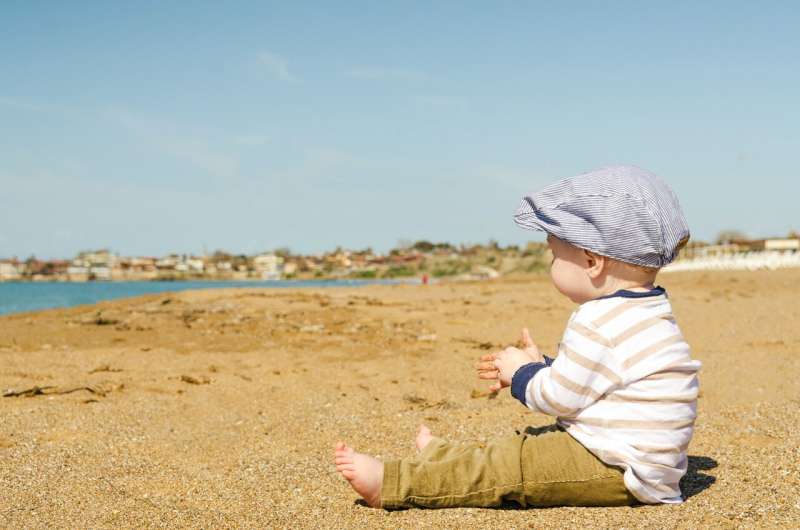
Credit: Unsplash/CC0 Public Domain
There are significant gaps in the UK public’s awareness of the telltale signs and symptoms of cancer in children and teens, with just a third of adults expressing confidence in being able to recognize them, find the results of a nationally representative survey published online in the journal Archives of Disease in Childhood.
Public awareness of the cancer signs and symptoms in this age group is much lower than it is in adults, suggesting the need for initiatives to plug this knowledge gap, say the researchers.
Childhood cancer is the leading cause of death in children over the age of 12 months, and a major cause of acquired disability, point out the researchers. In the UK, about 3,755 new cases are diagnosed every year in children and young people under the age of 24. Survival rates are reported to lag behind those of the rest of Europe, they add.
Symptoms of the disease in children often mimic other common ailments, and given that screening tests aren’t currently available, public and professional awareness to ensure early diagnosis and treatment is essential, say the researchers.
To gauge levels of knowledge and awareness of childhood/teen cancer signs and symptoms, a nationally representative sample of 1,000 adults were surveyed across the UK in May 2019. The survey included six questions revolving around perceived risk; overall confidence in recognizing cancer signs and symptoms; sources of further information; which, if any symptoms merited discussion with a doctor, and how quickly; and knowledge of symptoms indicative of cancer in a child/teen.
Around half (48%) the respondents were men; most (87%) were white; 9% were from Scotland and 5% from Wales; 13% were 18–24-year-olds; and around a third (32%) had children under the age of 16 in their household.
Around half (56%) of all respondents perceived the risk to be higher than expected, and this was irrespective of age, ethnicity, country, social grade or the presence of children in the household.
But around two-thirds (68%) of respondents said they weren’t confident about identifying the telltale signs and symptoms of childhood cancer, with parents of children much more likely to report this than those without: 42% vs. 27%.
Symptoms deemed to require medical assessment within 48 hours by over half the participants included seizures/fits, blood in urine or stool, and persistent vomiting. But on average, respondents identified only 11 out of 42 classic signs and symptoms. The most recognized symptoms included a lump or swelling in the pelvis, testicle or breast (46%); blood in urine or stool (44%); changes to moles (43%); lump/swelling in the chest wall or armpits (41%); and weight loss (40%).
The least recognized symptoms were early/late puberty (10%); developmental delay in infants (11%); and slow growth (13%), with 8%, 2%, and 6% of respondents, respectively, perceiving no need to discuss these symptoms with a doctor.
Furthermore, a significant proportion of respondents said they would wait 3 months or not seek medical advice at all for persistent/recurrent sore throat or hoarse voice (43%) and slow recovery after bone or joint injury (43%).
The responses indicated that symptom awareness and understanding of the resources available to find out more health information or raise concerns varied by age, ethnicity, and social class.
While every effort was made to eliminate potential bias in the responses given, the researchers acknowledge that some respondents might have been tempted to give answers they thought would be “socially desirable” rather than what they really thought. And young people, particularly 16–18-year-olds, were underrepresented among the respondents.
Nevertheless, the researchers point out, “Awareness has been marked as a key strategy for early cancer diagnosis in the UK, but there has been little focus on childhood cancers,” and highlight, “Perceived rarity of cancer in children is a key barrier to early diagnosis. While the number of cases may be small compared with adult cancers, the cumulative risk from birth to early adulthood is comparable to that of other childhood illnesses. This needs to be communicated with the public, as parents usually associate common symptoms with common childhood ailments, but not cancer.”
More information:
Public awareness of childhood, teenager and young adult cancer signs and symptoms in Great Britain: a cross-sectional survey, Archives of Disease in Childhood (2023). DOI: 10.1136/archdischild-2023-325841
Citation:
Survey finds significant gaps in UK public awareness of telltale cancer signs in kids and teens (2023, October 16)
retrieved 16 October 2023
from https://medicalxpress.com/news/2023-10-survey-significant-gaps-uk-awareness.html
This document is subject to copyright. Apart from any fair dealing for the purpose of private study or research, no
part may be reproduced without the written permission. The content is provided for information purposes only.
>>> Read full article>>>
Copyright for syndicated content belongs to the linked Source : Medical Xpress – https://medicalxpress.com/news/2023-10-survey-significant-gaps-uk-awareness.html
